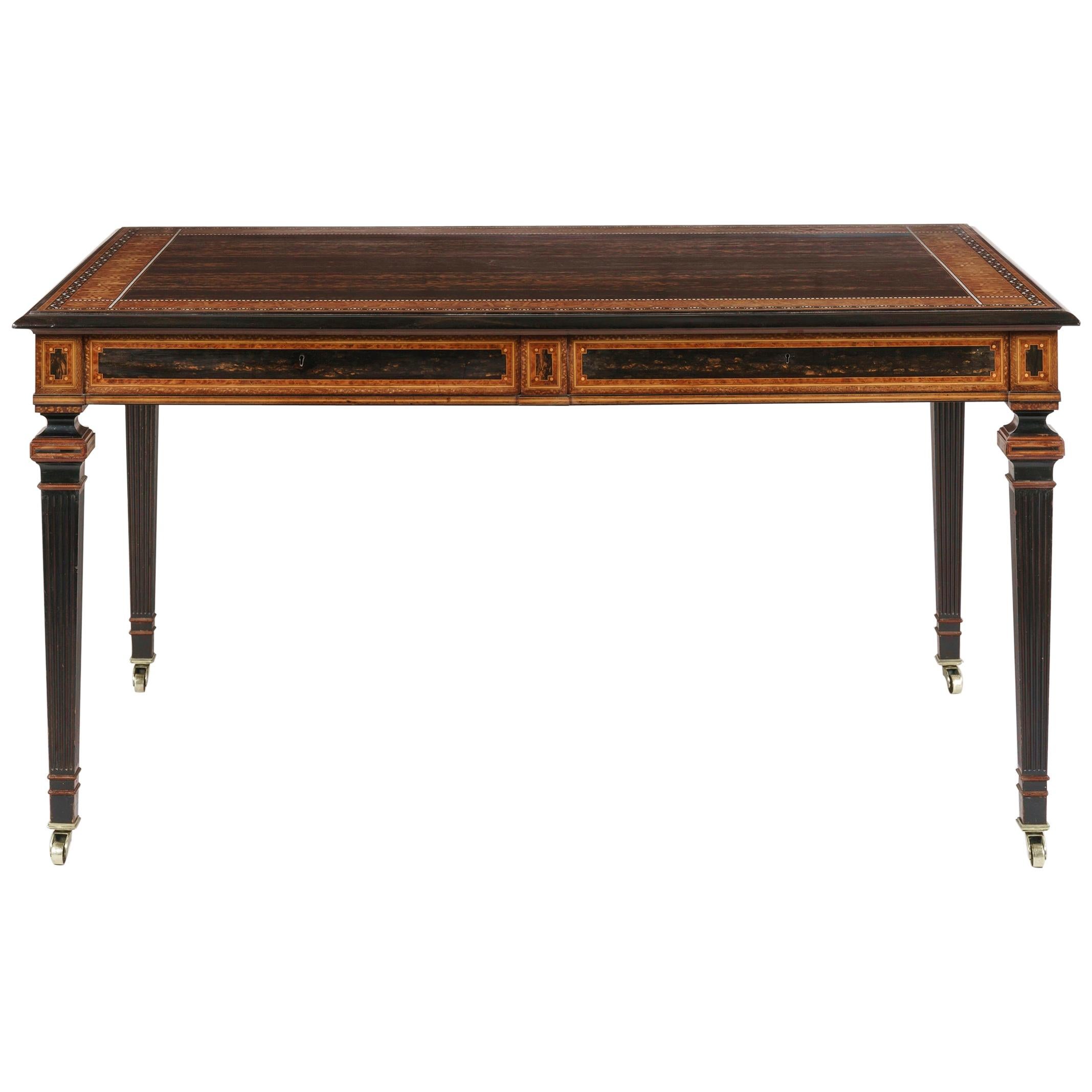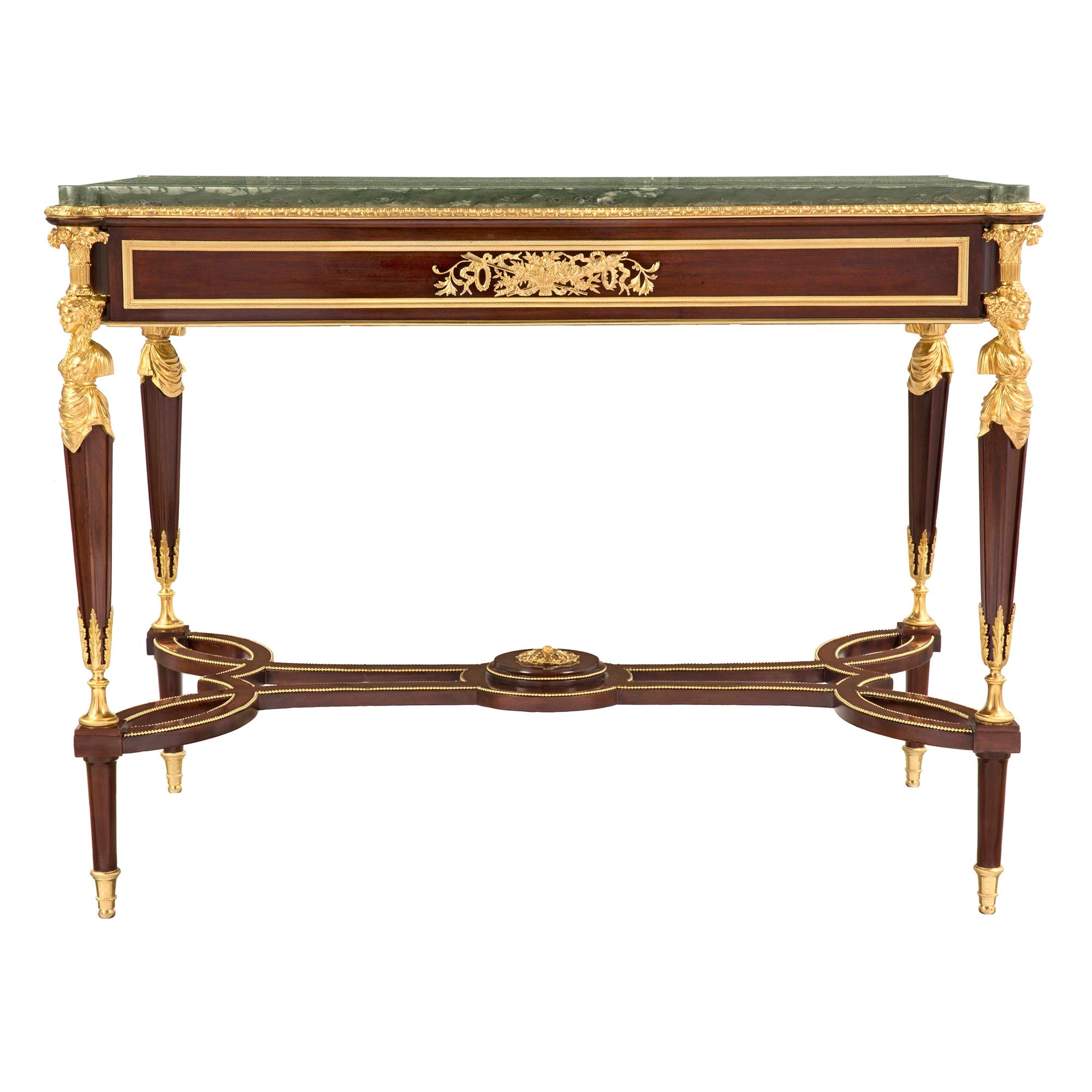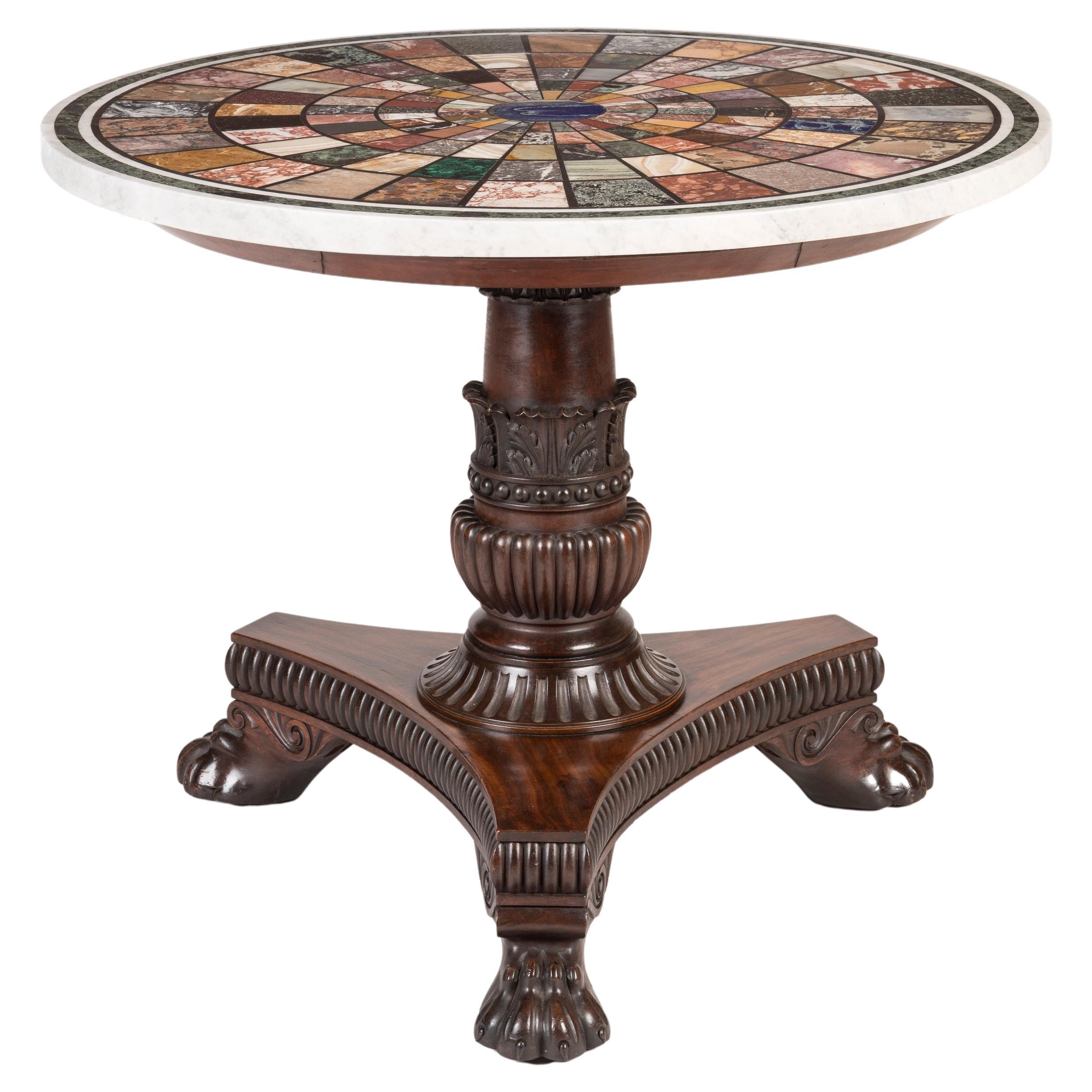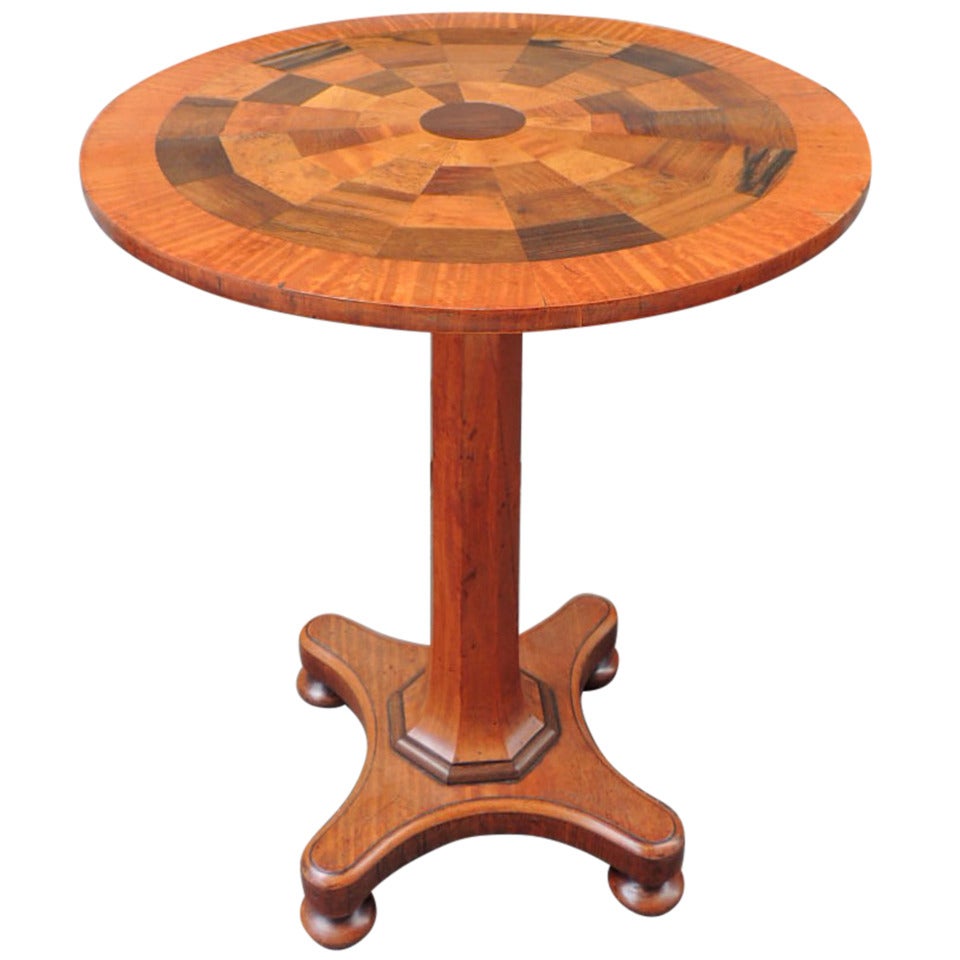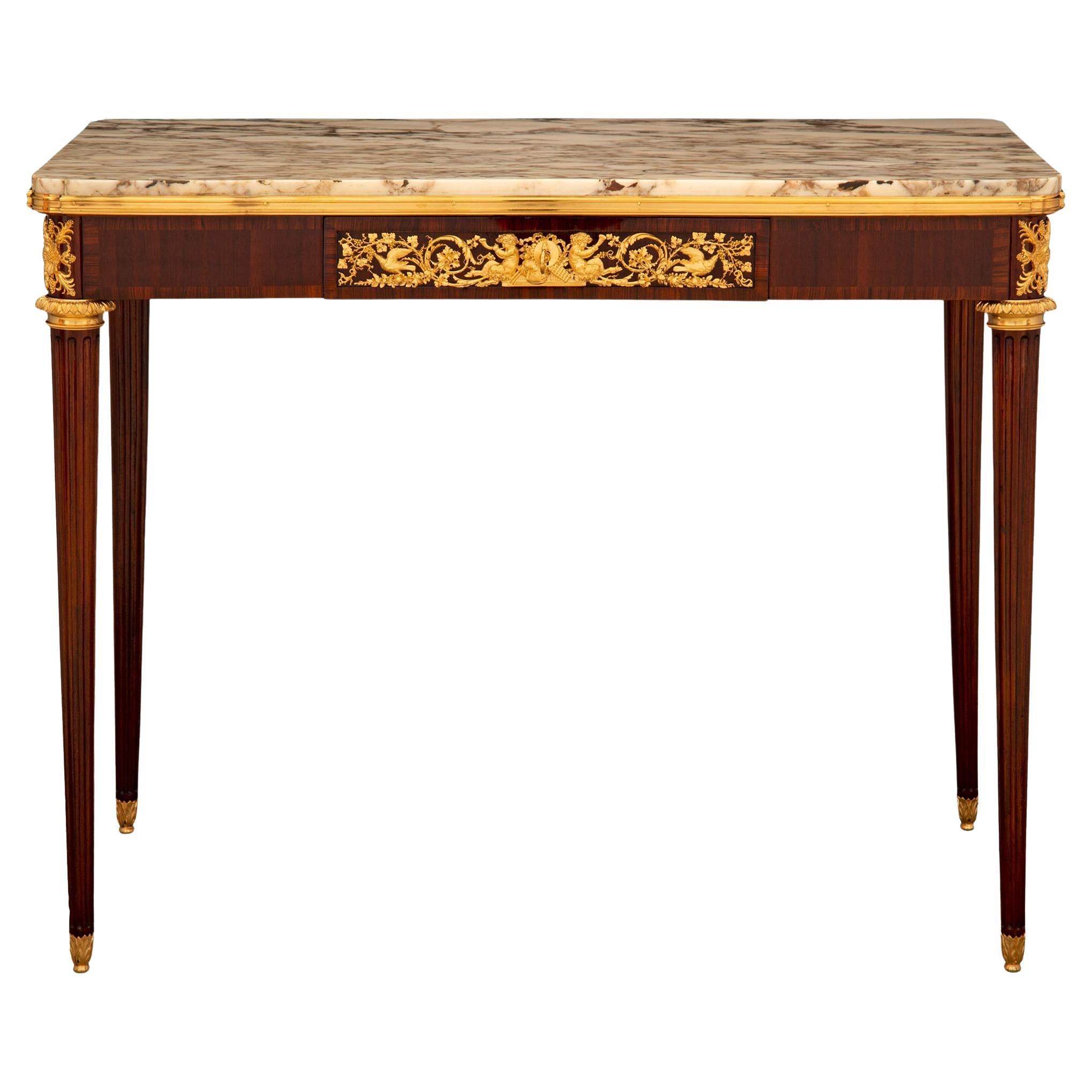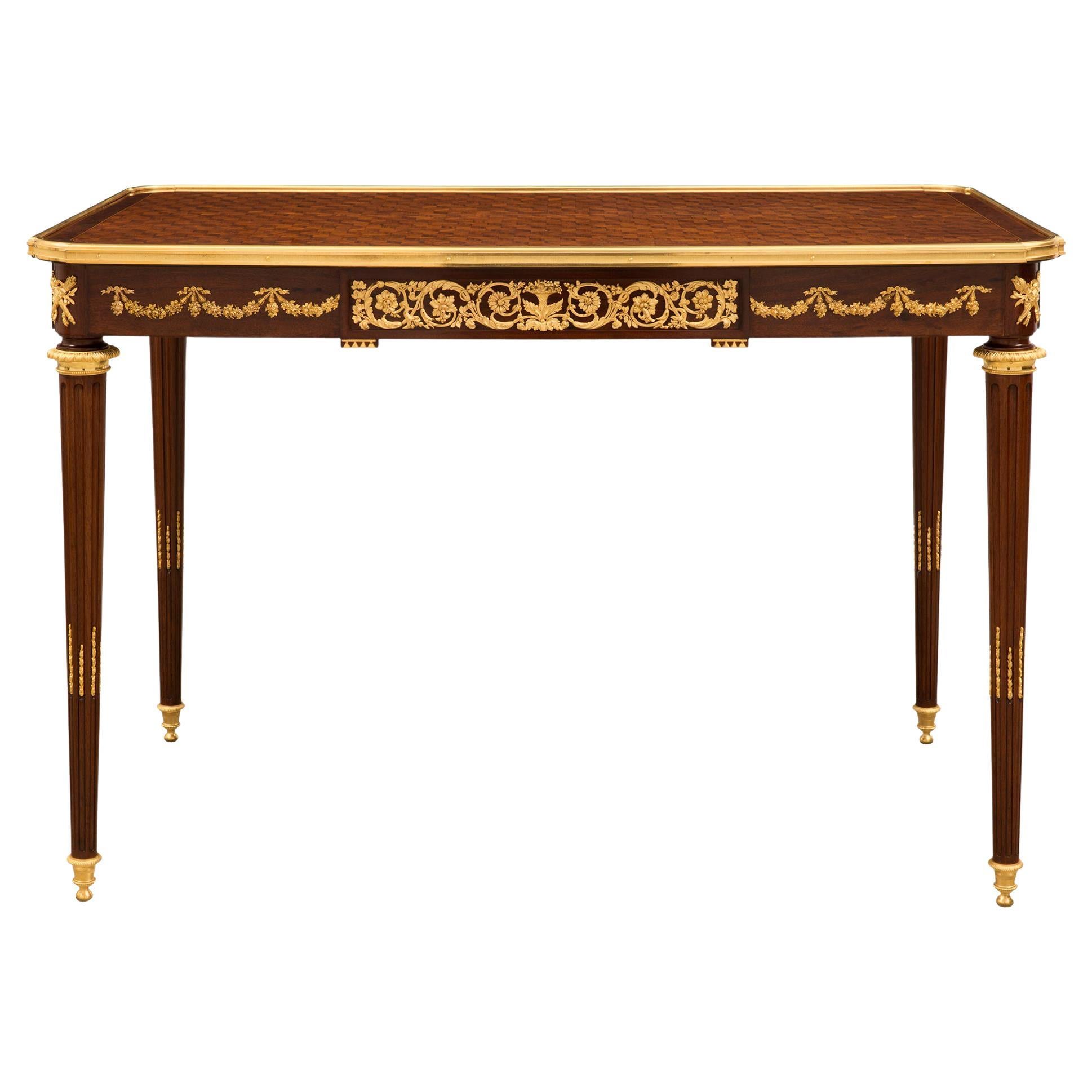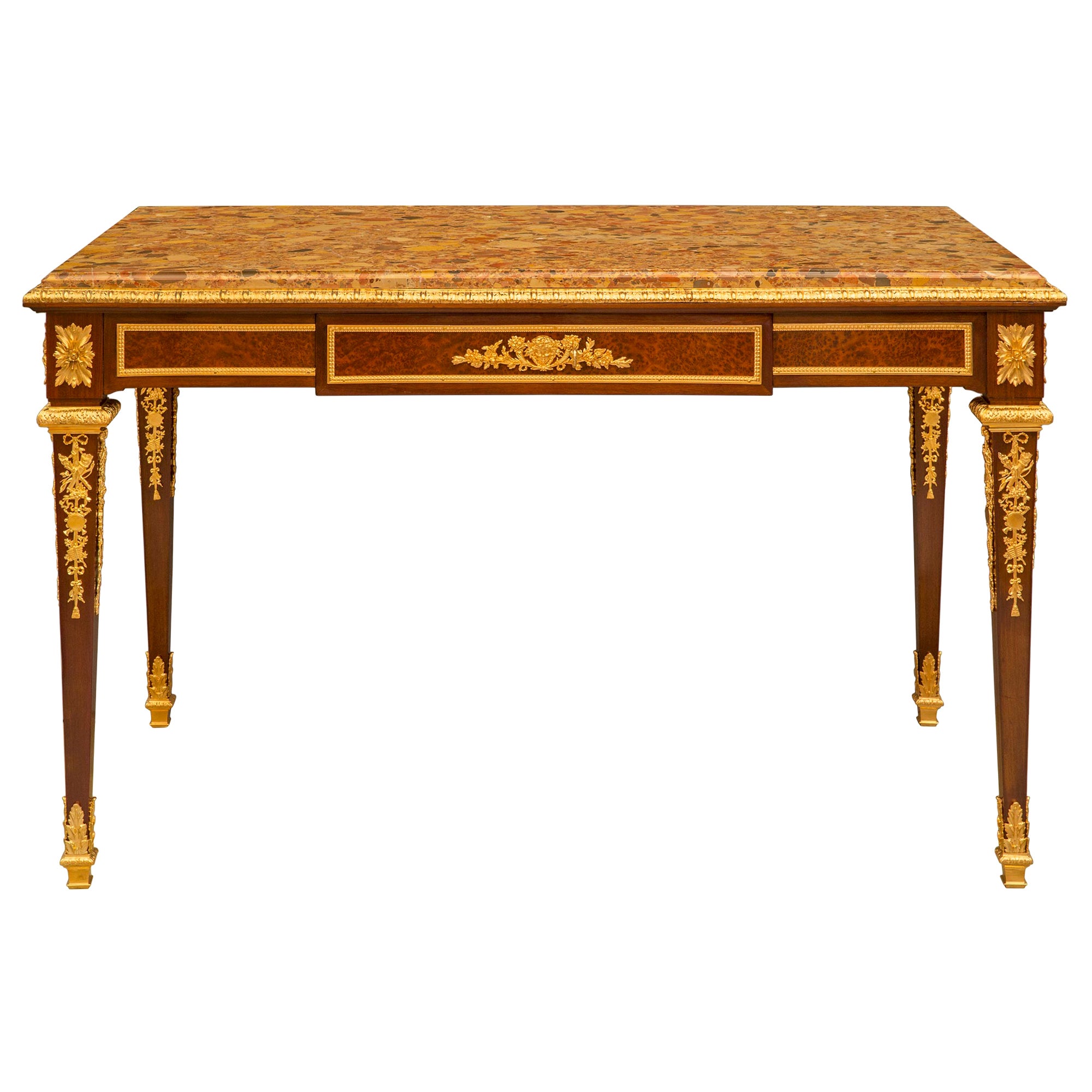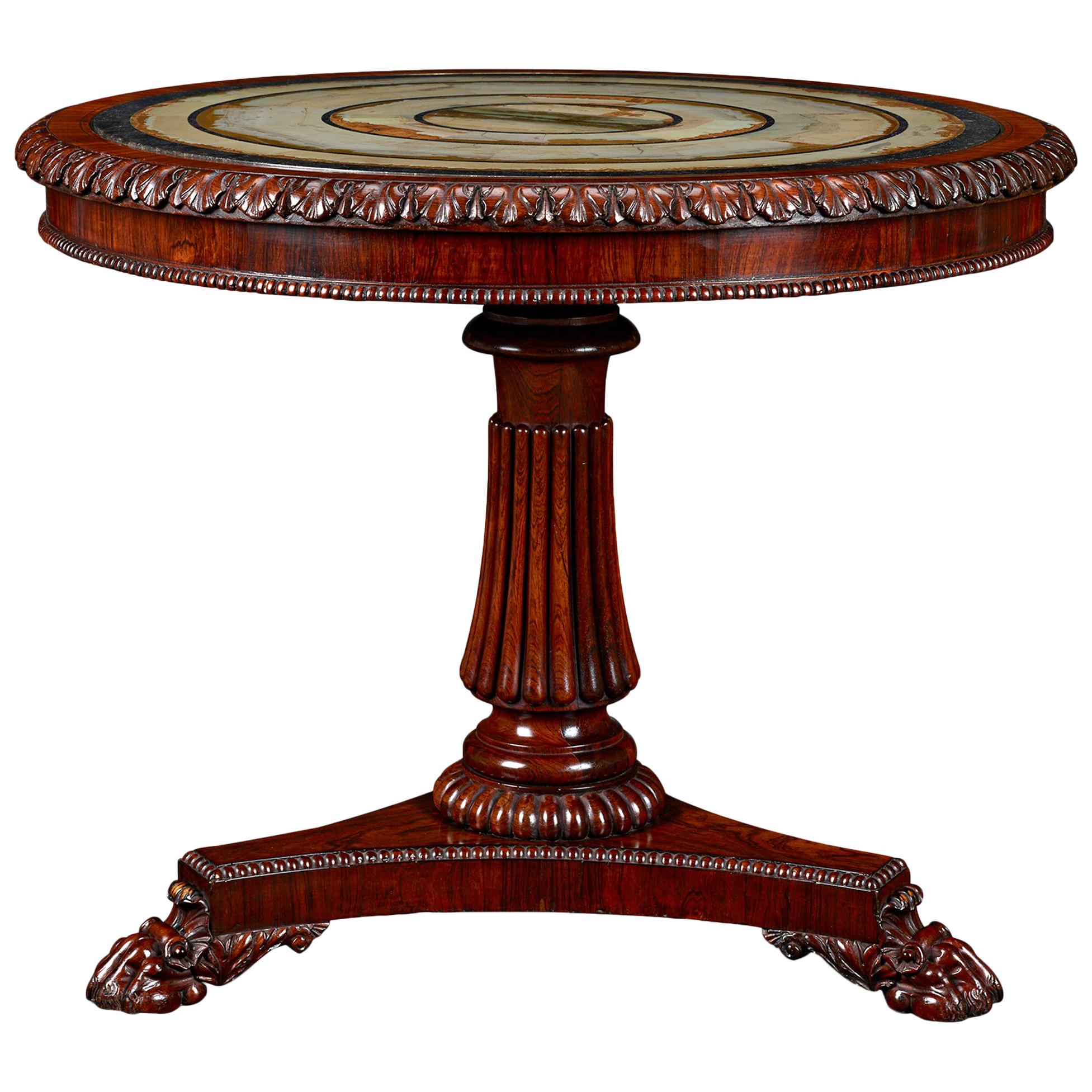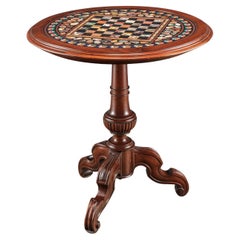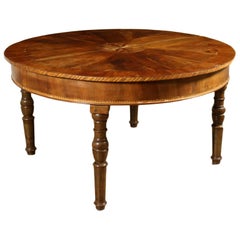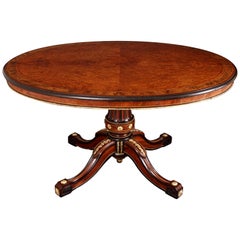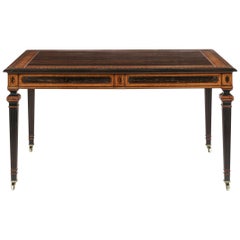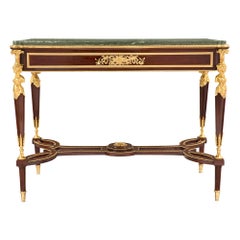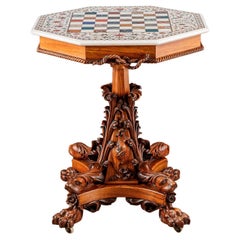
Table in Semiprecious Stone, Amic Hotton 'Attributed to', 19th Century
View Similar Items
Want more images or videos?
Request additional images or videos from the seller
1 of 14
Table in Semiprecious Stone, Amic Hotton 'Attributed to', 19th Century
About the Item
- Dimensions:Height: 29.14 in (74 cm)Diameter: 25.99 in (66 cm)
- Style:Other (Of the Period)
- Materials and Techniques:
- Place of Origin:
- Period:
- Date of Manufacture:1800s
- Condition:Wear consistent with age and use.
- Seller Location:Milano, IT
- Reference Number:1stDibs: LU1721232804222
About the Seller
4.9
Gold Seller
These expertly vetted sellers are highly rated and consistently exceed customer expectations.
Established in 2015
1stDibs seller since 2015
358 sales on 1stDibs
Typical response time: 1 hour
More From This SellerView All
- Table in Semiprecious Stone, Tuscany, England, Mid-19th CenturyLocated in Milano, ITCircular top in marble committed, with polychrome chessboard in the center; the marble is framed in a rosewood support, supported by a central turned baluster resting on three shaped...Category
Antique Mid-19th Century Italian Other Center Tables
MaterialsMarble
- Lombard-Venetian Extensible Table Walnut, Italy, 19th CenturyLocated in Milano, ITLombard-Venetian extensible table supported by four refined walnut legs that originally had wheels. Walnut veneered top surface with olive edges and d...Category
Antique 19th Century Italian Other Tables
MaterialsCherry, Maple, Olive, Walnut, Fir
$3,705 Sale Price25% Off - Table Clock in Gilded Bronze, France, First Half of the 19th CenturyLocated in Milano, ITGilded and chiseled bronze clock. On the large rectangular base there is a scene with mythological divinities in relief on a finely chiseled background. Decorations with plant motifs...Category
Antique Early 19th Century French Other Table Clocks and Desk Clocks
MaterialsBronze
- 1950s coffee table in ebony-stained wood and glassBy Non-Standard Furniture and LightingLocated in Milano, ITCenter table, ebony-stained wood, glass. Good conditions.Category
Vintage 1950s Italian Mid-Century Modern Center Tables
MaterialsGlass, Wood
- Console Amboina Briar, England, 19th CenturyLocated in Milano, ITEnglish console resting on a shelf and equipped with two monopod griffins shaped uprights; the rear panel consists of three mirror plates. Entirely veneered in amboina briar, it has ...Category
Antique 19th Century English Other Console Tables
MaterialsBrass
- Travel Case Wood France 19th CenturyLocated in Milano, ITMahogany wood trunk with brass sockets. Inside, a set in French porcelain finely decorated in pure gold and polychrome with ribbons and garlands of flowers. Service consisting of six...Category
Antique 19th Century French Other Decorative Boxes
MaterialsMahogany
$3,601 Sale Price / set20% Off
You May Also Like
- Exceptional 19th Century Centre Table Attributed to Holland & SonsBy Holland & SonsLocated in London, by appointment only• One of the finest pieces of 19th century English furniture ever made • Firmly attributed to the Royal cabinetmaker, Holland & Sons • Made using stunning rare & exotic timbers, Th...Category
Antique Mid-19th Century British Early Victorian Center Tables
MaterialsOrmolu
- 19th Century Coromandel and Inlaid Table Attributed to Jackson & GrahamBy Jackson & GrahamLocated in London, GBA magnificent library table Attributed to Jackson & Graham Of free standing rectangular form, constructed in coromandel, with inlays in thuya, ebony, boxwood, and honeysuckle; the fluted legs rising from square brass castor-shod feet; the frieze housing two lockable drawers fitted with rare ‘tamper proof’ Chubb locks and having quadrant moulded cedar lined interiors; the platform having a central panel of beautifully chosen matched coromandel veneers, with an outer guard border of a running pattern of stylised anthemions; the ebony edges having a thumb nail moulding, circa 1865 The firm of Jackson & Graham established in 1836 by Thomas Jackson and Peter Graham at 37 Oxford Street London, and for the next fifty years produced predominately high quality furniture and represented Britain at many of the international exhibitions. Their clients included Queen Victoria, Napoleon III, the Grand Khedive of Cairo and the royal palace in Siam. They were particularly noted for their fine marquetry work, the use of Wedgwood plaques, rare woods, and fine casting of bronze mounts. They engaged the leading designers of the period, inter alia, Owen Jones, Bruce Talbert, Alfred Lorimer and Eugene Prignot. In the mid-1850s the workforce was recorded as 250, and by 1875, the company was employing 600 workers. They were feted exhibitors at many of the Great Exhibitions of the 19th century, and frequent prize winners. At the Paris International Exhibition of 1878, the furniture jury noted of them ‘ the workmanship is so perfect that even with the aid of a magnifying glass scarcely the slightest imperfection is to be found’. In 1885 the company was absorbed by Collinson and Lock, who continued their standard of excellence. Charles Chubb was apprenticed as a blacksmith before starting business as a ships’ ironmonger in Winchester. Jeremiah soon joined the business, and by 1818 the brothers had branched out into lockmaking, founding the famous Chubb Company. The business really got started when Jeremiah Chubb patented his new ‘detector lock’ in 1818. The lock was constructed so that if someone tried to pick it or open it with the wrong key it became inoperable. To make the lock work again the owner had to use a special key supplied with the lock. The aim of the detector lock was to prevent burglaries, and to warn the owner that someone had tried to break into their property. The lock soon became popular, and sales of the Chubbs’ products increased even more when they won a government competition to design a lock that could only be opened using its own key. After the invention of the detector lock, the Chubbs decided to move to Wolverhampton, which already had an established lock making industry. By 1838 they were making 28,000 locks a year at their Wolverhampton factory. Another product was added to the Chubb range in 1835 when a patent was taken out for a burglar resistant safe, and in 1837 the Chubb safe...Category
Antique 19th Century English Tables
MaterialsBrass
- French 19th Century Mahogany, Ormolu and Marble Table, Attributed to DassonBy Henry DassonLocated in West Palm Beach, FLA stunning and extremely high quality French 19th century Louis XVI style mahogany, ormolu and vert campan marble side/center table, after a model by Adam Weisweiler and attributed to Henry Dasson. The table is raised by fine topie shaped feet with elegant circular tapered supports. Each leg displays a unique square tapered shape with a carved recessed design and elegant foliate ormolu movements which encase the leg. Each are connected by a fine mahogany stretcher with elegant beaded ormolu bands and a lovely central floral reserve. Above are impressive richly chased caryatids with lovely flowing drape and tied hair below intricately detailed floral baskets. The straight frieze displays a recessed panel framed in a fine mottled ormolu band. The frieze is centered by a charming and richly chased pierced ormolu mount with a central floral bouquet and crossed staff...Category
Antique 19th Century French Louis XVI Center Tables
MaterialsMarble, Ormolu
- 19th Century Italian Micro-Mosaic Grand Tour Table Attributed to RoccheggianiBy Cesare RoccheggianiLocated in London, GBA rare grand tour table Possibly by Cesare Roccheggiani The circular platform of marmore nero, inset with fine micromosaic panels consisting of thousands of coloured glass tesserae; a central roundel depicting The Vatican from St Peter's Square within a malachite border, surrounded by a border including four cartouches in polychrome reserves of Roman views including the Coliseum, the Roman Forum, with the remnants of the Temple of Vespasian; the Temple of Vesta, and the Pantheon, all interspersed and linked by voluminous bouquets of fruit and flowers representing the 4 seasons; the outer stylised border inlaid with deep blue tesserae evocative of exotic Lapis Lazuli. Supported on a finely carved Italian giltwood base, its design incorporating baskets of fruit and floral garlands echoing the 4 seasons theme of the table. Italian, Circa 1875 Other table tops inspired by this design, although not as finely executed, can be found in several Russian collections (which house the greatest micromosaics) including Vorontsov Palace, Muranovo House, as well as the imperial State Hermitage Museum. A tabletop with profuse floral micromosaic work was commissioned by the Belgian Royal family (sold Sotheby's, 2003). The floral garlands, the magnificent quality of the inlay and the use of distinct curved tesserae support the present attribution to Cesare Roccheggiani. According to Jeanette Hanisee Gabriel, the world expert on micro mosaics, curved tesserae pieces were used in foliage, grass and animal fur by only the very best mosaicists such as Roccheggiani. Evidence of curved pieces, for instance, is observed in the foreground of the Temple of Vesta cartouche, to name but one observation of the master's hand. The scion of a dynasty of mosaicists, Roccheggiani was perhaps the most successful mosaicist in the last quarter of the nineteenth century. He is doubtless related to Lorenzo Roccheggiani, a late eighteenth-century master mosaicist at the Vatican, whose work included the altarpiece, Crucifixion of St. Peter after Guido Reni. Nicolo Roccheggiani, possibly Lorenzo's son, was also a principle artist at the Vatican, involved in executing the famous tabletop Achilles Shield...Category
Antique 19th Century Italian Grand Tour Center Tables
MaterialsMalachite, Marble, Belgian Black Marble
- 19th Century English Regency Pollard Oak Centre/Drum Table Attributed to GillowsBy Gillows of Lancaster & LondonLocated in Dublin, IEA stunning early 19th century English Regency Pollard Oak drum /centre table Attributed to Gillows Of Lancaster & London. The circular top, inset with a gilt tooled leather writing s...Category
Antique Early 19th Century English Regency Center Tables
MaterialsWood
- 19th Century 'Grand Tour' Marble Top Table with Base attributed to TrotterBy William TrotterLocated in London, GBAn Impressive 'Grand Tour' Specimen Marble Top Centre Table The base attributed to William Trotter of Edinburgh Constructed in a finely patinated mahogany, with a Florentine Pietra ...Category
Antique 19th Century Italian Grand Tour Center Tables
MaterialsAgate, Lapis Lazuli, Malachite, Marble, Breccia Marble, Porphyry
Recently Viewed
View AllMore Ways To Browse
Stone Base For Table
Antique Stone Tables
Antique Stone Table
Stone Carved Table
Exotic Stone
Small Stone Table
Small Stone Tables
Small Colored Table
Hand Carved Stone Table
1800s Stone
Antique Marbles
Wooden Table England
Antique Table Wheels
Table Lack
Antique Small Wooden Table
Antique Wooden Small Table
Small Antique Wooden Table
Semi Precious Table


